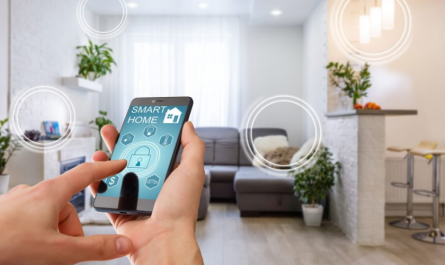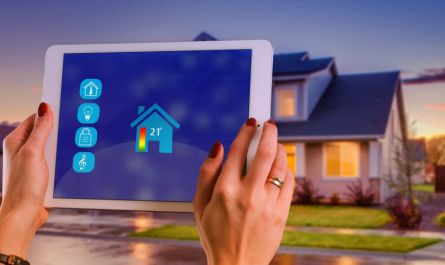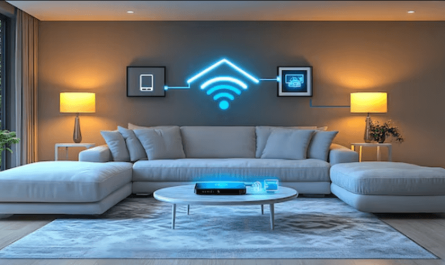As more people work remotely, creating a productive home office has become essential. A well-designed workspace can boost focus, minimise distractions, and increase motivation. Here’s a step-by-step guide to setting up a home office that keeps you efficient, comfortable, and inspired.
Why a Functional Home Office Matters
Having a dedicated workspace impacts your productivity, mood, and overall performance. Here are a few reasons why designing a functional home office is beneficial:
- Enhanced Focus: A separate, distraction-free space makes it easier to concentrate.
- Better Work-Life Balance: Separating work from home life helps prevent burnout.
- Healthier Posture: A well-designed office reduces strain and promotes good posture.
By setting up a workspace that meets your needs, you’ll make work-from-home life smoother and more rewarding.
Essential Elements of a Functional Home Office
Creating a productive home office doesn’t have to be complicated or costly. Here are the core elements to consider for an effective setup:
- Ergonomic Desk and Chair
- A comfortable, ergonomic chair supports your posture and prevents back pain.
- An adjustable desk or standing desk can also improve circulation and keep you energised throughout the day.
- Proper Lighting
- Aim for a mix of natural light and task lighting. Position your desk near a window, if possible, and add a desk lamp for focused lighting.
- Avoid harsh, direct light that can cause glare and eye strain.
- High-Quality Equipment
- Invest in essential tools like a reliable laptop or desktop, high-speed internet, and noise-canceling headphones.
- Use an external monitor if your work requires multitasking, as this can significantly improve efficiency.
- Effective Storage Solutions
- Keep your workspace organised with storage solutions like shelves, drawers, or filing cabinets.
- Use desktop organisers to hold pens, notebooks, and other supplies, reducing clutter and keeping essentials within reach.
- Personalised Decor
- Add a few decorative items to make your space more inviting. Plants, artwork, and personal photos create a comfortable and inspiring atmosphere.
- Use muted, calming colours to enhance focus, or add pops of colour for a creative boost.
Design Tips for Maximising Productivity
Setting up your home office goes beyond picking the right furniture. Here are practical design tips to help you create a functional and motivating environment:
- Optimise Desk Placement
- If possible, face your desk towards a window or a wall to limit distractions.
- Keep a clear line of sight and enough space around your desk for easy movement.
- Use Vertical Space
- Maximise storage by using shelves, wall-mounted organisers, or bulletin boards for notes and reminders.
- Keeping things off your desk frees up space and helps maintain a tidy look.
- Create Defined Zones
- Divide your office area into specific zones, like a work zone, a relaxation zone, and a storage area.
- Use rugs, furniture, or lighting to create these divisions, even if your office is a small space.
- Add Sound Control Elements
- Soft furnishings like rugs, curtains, or acoustic panels can absorb sound, helping you concentrate better.
- If you’re easily distracted by noise, consider a white noise machine or noise-cancelling headphones.
- Implement Cable Management
- Organise cables with clips or cable boxes to reduce clutter and prevent distractions.
- This also helps prevent accidents and keeps your workspace looking neat.
Essential Tech Tools for a Productive Home Office
To stay efficient, incorporate tech tools that streamline your work and reduce distractions:
- Project Management Software: Tools like Trello, Asana, or Notion keep your tasks and projects organised.
- Time Management Apps: Use apps like Toggl or Focus@Will to track time and stay focused.
- Cloud Storage Solutions: Tools like Google Drive, Dropbox, or OneDrive allow easy file sharing and backup.
- Ergonomic Accessories: A separate keyboard, mouse, and laptop stand can prevent strain and enhance comfort.
Investing in the right tech setup makes a big difference in how productive and comfortable you’ll feel during your work hours.
Tips to Keep Your Home Office Clutter-Free
An organised workspace boosts productivity and reduces stress. Here’s how to keep clutter at bay:
- File Digitally
- Go paperless by scanning important documents and storing them digitally.
- This not only saves space but also makes it easier to find files when you need them.
- Declutter Regularly
- Set aside time weekly to tidy up and discard anything that’s no longer needed.
- A clean, organised workspace keeps distractions to a minimum.
- Use Drawer Dividers
- Drawer dividers keep small items like pens, clips, and sticky notes organised.
- These also help prevent losing items in desk drawers and make finding what you need faster.
- Limit Personal Items
- Personal touches are great, but too many can create a cluttered look.
- Stick to a few decorative items to avoid overcrowding your desk space.
Creating Boundaries for a Better Work-Life Balance
Separating work from home life can be challenging, especially if your office space is limited. Here are ways to set clear boundaries:
- Establish Office Hours
- Define your working hours and stick to them as closely as possible.
- Turn off notifications and avoid work tasks after hours to maintain a healthy balance.
- Add a Physical Divider
- If you share a room with your workspace, use a screen, curtain, or even a large plant as a divider.
- This creates a mental and physical boundary between your work area and home environment.
- Leave Work at the “Office”
- At the end of the day, tidy up your desk and shut down your computer.
- By “leaving” your workspace, you signal to your brain that it’s time to relax.
- Plan Regular Breaks
- Take scheduled breaks to stretch, walk around, and rest your eyes.
- Short breaks improve focus and prevent burnout, especially during long work hours.
Final Thoughts
Designing a functional home office can enhance your productivity, health, and overall work experience. With the right furniture, tech tools, and organisational strategies, you can create a workspace that keeps you focused and motivated. Whether you’re working from a small corner or a dedicated room, a few smart choices can transform your space into a productivity powerhouse.







